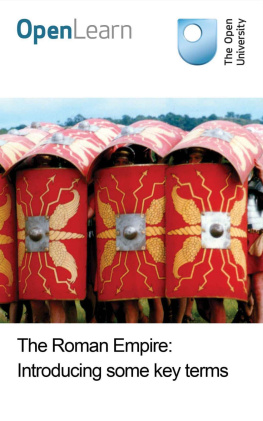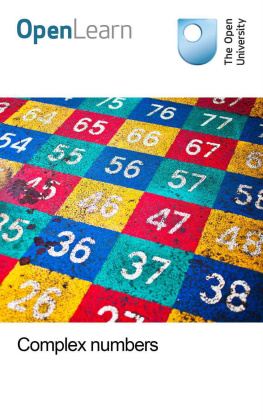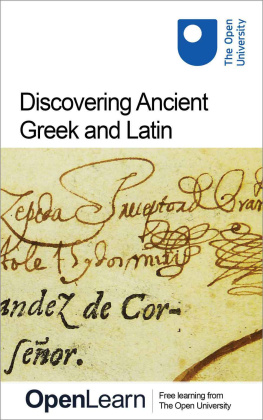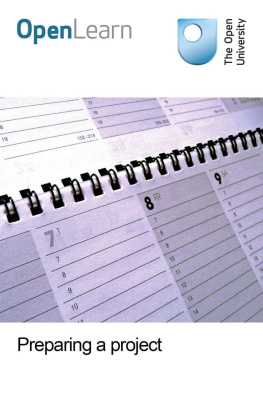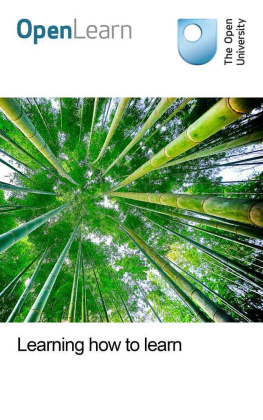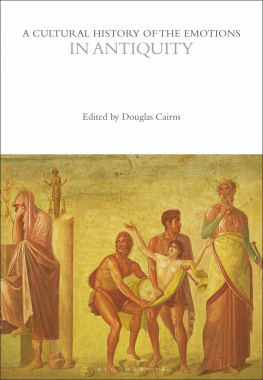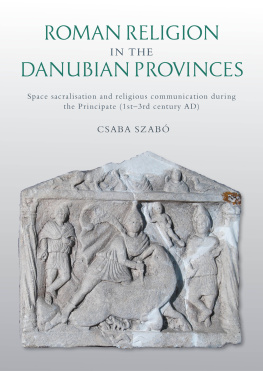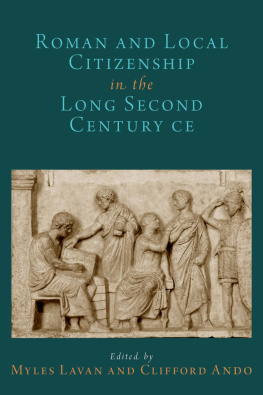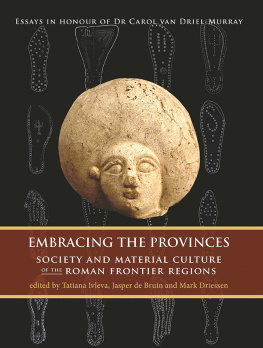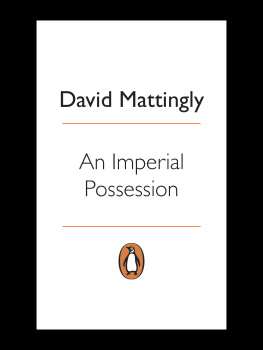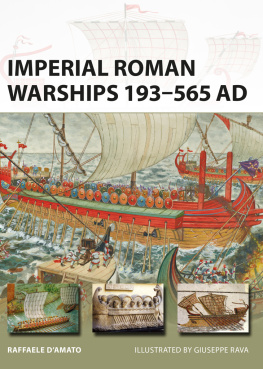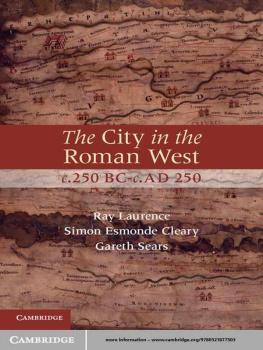AA309_1Culture, Identity and Power in the Roman Empire
The Roman Empire: introducing some key terms
About this free course
This OpenLearn course provides a sample of Level 3 study in Arts and Humanities: http://www.open.ac.uk/courses/find/arts-and-humanities.
This version of the content may include video, images and interactive content that may not be optimised for your device.
You can experience this free course as it was originally designed on OpenLearn, the home of free learning from The Open University - www.open.edu/openlearn/history-the-arts/history/social-economic-history/the-roman-empire-introducing-some-key-terms/content-section-0.
There youll also be able to track your progress via your activity record, which you can use to demonstrate your learning.
The Open University, Walton Hall, Milton Keynes, MK7 6AA, United Kingdom
Copyright 2016 The Open University
Intellectual property
Unless otherwise stated, this resource is released under the terms of the Creative Commons Licence v4.0 http://creativecommons.org/licenses/by-nc-sa/4.0/deed.en_GB. Within that The Open University interprets this licence in the following way: www.open.edu/openlearn/about-openlearn/frequently-asked-questions-on-openlearn. Copyright and rights falling outside the terms of the Creative Commons Licence are retained or controlled by The Open University. Please read the full text before using any of the content.
We believe the primary barrier to accessing high-quality educational experiences is cost, which is why we aim to publish as much free content as possible under an open licence. If it proves difficult to release content under our preferred Creative Commons licence (e.g. because we cant afford or gain the clearances or find suitable alternatives), we will still release the materials for free under a personal end-user licence.
This is because the learning experience will always be the same high quality offering and that should always be seen as positive even if at times the licensing is different to Creative Commons.
When using the content you must attribute us (The Open University) (the OU) and any identified author in accordance with the terms of the Creative Commons Licence.
The Acknowledgements section is used to list, amongst other things, third party (Proprietary), licensed content which is not subject to Creative Commons licensing. Proprietary content must be used (retained) intact and in context to the content at all times.
The Acknowledgements section is also used to bring to your attention any other Special Restrictions which may apply to the content. For example there may be times when the Creative Commons Non-Commercial Sharealike licence does not apply to any of the content even if owned by us (The Open University). In these instances, unless stated otherwise, the content may be used for personal and non-commercial use.
We have also identified as Proprietary other material included in the content which is not subject to Creative Commons Licence. These are OU logos, trading names and may extend to certain photographic and video images and sound recordings and any other material as may be brought to your attention.
Unauthorised use of any of the content may constitute a breach of the terms and conditions and/or intellectual property laws.
We reserve the right to alter, amend or bring to an end any terms and conditions provided here without notice.
All rights falling outside the terms of the Creative Commons licence are retained or controlled by The Open University.
Head of Intellectual Property, The Open University
The Open University
978-1-4730-0649-2 (.epub)
978-1-4730-1417-6 (.kdl)
Contents
Introduction
This course introduces key terms that are essential for understanding the Classical Roman world.
This OpenLearn course provides a sample of Level 3 study in Arts and Humanities.
Learning outcomes
After studying this course, you should be able to:
- understand the terminology associated with the culture, identity and power relevant to the Roman Empire, as treated both in ancient sources and modern scholarship and presentation.
1 Preliminary exercise
Before you start work on this course, please watch the video sequence Introducing the Roman World below. This visual introduction will introduce many of the terms to be defined in this course and set them in context. It will also show the kinds of sources you might work on for evidence of culture, identity and power in the Roman Empire if you continue to study this topic. You may wish to replay this short sequence as you work on the course, but for now enjoy looking at the wide range of ideas and material it shows!
Exercise 1
In the sequence you will hear a reading from Virgil, Aeneid 1.279, To Romans I set no boundary in space or time. I have granted them dominion and it has no end.
To help you focus quickly on some of the central questions as you watch, answer the following questions:
How did Rome see its role in the world?
What key questions follow from this?
Introducing the Roman world (video 8 minutes)
Video content is not available in this format.
Introducing the Roman World
The period covered by the course is roughly from the middle of the first century BC to the early part of the third century AD, and material from many parts of the Roman Empire will be examined.
2 Defining terms
2.1 Roman Empire
First of all there are some fundamental questions to settle about what is involved in the term Roman Empire: what is meant by Roman, and what by empire?
What Roman signifies is the key question of this course, and the quest to define Roman-ness, or romanitas, will recur as a central topic. To begin, let us reflect on the various meanings we attach to the word Roman. We use it in connection with the city, the empire and the people, and each usage involves different identities. So it is important to be aware of its various connotations.
What empire signifies is perhaps more complicated than one might think. Like the word Rome, we use empire to mean various things: it can signify space (the territory of an empire), a period (during which an empire held sway), and a system of rule (for instance, one that differs from a republic, which has elected rulers). Certainly the term Roman Empire involves all three meanings, sometimes separately, sometimes all at once. In Latin, too, the word imperium, which came to be used for empire, contains a similar set of meanings, and we find that ancient sources also used the term in different ways (though probably more often to signify space or control rather than time). So the terminology has always been potentially complicated.
What compounds the complication is that in historical terms Rome had an empire before becoming an empire (Nicolet, 1991, p. 1). Although this may sound like a riddle it is simply explained by the fact that Rome had territory under its control from the third century BC, long before its republican system of government ended and the empire started with Augustus. During the later stage of the republic this territory continued to grow, through conquest or successful diplomacy, and Augustus contributed further to this great expansion when the period of empire began, as he himself later boasted (Wells, p. 77). Look at the different stages indicated on the map (Plate 1) below. This shows the expansion of Rome's control through the third and second centuries BC, at the death of Augustus in AD 14, and at the end of Trajan's reign in AD 117. As you will discover when you read narratives of events, this period of transition between republic and empire was complex, turbulent and fraught with contested change. A central reason for this is that the old republican mechanisms of government were not proving adequate to managing the vastly extended territory, and the situation was open to exploitation by powerful individuals. Various solutions were tried before Augustus eventually took sole control.

